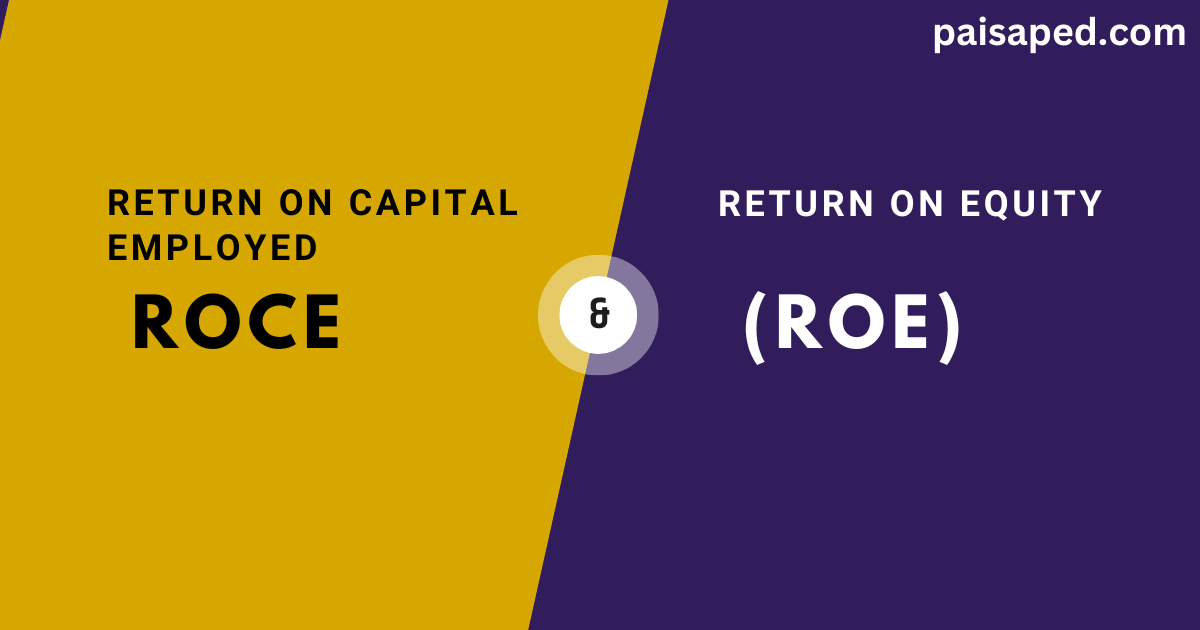Introduction
In the world of finance, understanding key performance indicators is essential for evaluating the health and profitability of a company. Two such metrics that play a crucial role in assessing a company’s financial performance are Return on Capital Employed (ROCE) and Return on Equity (ROE). In this blog post, we’ll delve into what ROCE and ROE are, how they differ, and why they matter for investors and analysts alike.
Return on Capital Employed (ROCE)
Return on Capital Employed (ROCE) is a financial ratio that measures a company’s profitability and efficiency in generating profits from its capital investments. It indicates how well a company is utilizing its capital to generate returns for shareholders and debt holders.
The formula for ROCE is:
ROCE= (Capital Employed / Operating Income)×100%
where:
- Operating Income refers to the earnings before interest and taxes (EBIT) or operating profit.
- Capital Employed represents the total capital invested in the business, including equity and long-term debt.
ROCE provides insight into a company’s ability to generate profits relative to the total capital employed in its operations. A higher ROCE indicates that a company is generating strong returns on its investments and is efficiently utilizing its capital resources.
Return on Equity (ROE)
Return on Equity (ROE) is a financial ratio that measures a company’s profitability relative to the shareholders’ equity. It shows how much profit a company generates for each dollar of shareholders’ equity invested in the business.
The formula for ROE is:
ROE = ( Net Income / Shareholders′ Equity ) ×100%
where:
- Net Income refers to the company’s profit after deducting expenses, taxes, and interest payments.
- Shareholders’ Equity represents the total value of the shareholders’ ownership interest in the company.
ROE reflects the efficiency with which a company is generating profits from shareholders’ investments. A higher ROE indicates that a company is generating more profit per unit of shareholders’ equity, signaling strong financial performance and shareholder value creation.
Differences and Significance
While both ROCE and ROE are profitability metrics, they focus on different aspects of a company’s financial performance. ROCE measures the efficiency of capital utilization, considering both equity and debt, whereas ROE specifically evaluates the profitability of equity investments.
ROCE is particularly useful for assessing how effectively a company is deploying its total capital to generate returns, making it valuable for analyzing capital-intensive industries such as manufacturing or utilities. On the other hand, ROE provides insight into the returns generated exclusively for shareholders, making it a key metric for evaluating companies’ attractiveness to investors.
For investors and analysts, ROCE and ROE serve as important tools for evaluating a company’s financial health, performance, and profitability. By analyzing these metrics in conjunction with other financial ratios and industry benchmarks, stakeholders can make informed investment decisions and assess a company’s long-term sustainability and growth prospects.
Conclusion
Return on Capital Employed (ROCE) and Return on Equity (ROE) are critical financial metrics that provide valuable insights into a company’s profitability, efficiency, and shareholder value creation. While ROCE measures the efficiency of capital utilization, considering both equity and debt, ROE specifically evaluates the profitability of shareholders’ investments. By understanding and analyzing these metrics, investors and analysts can gain a comprehensive understanding of a company’s financial performance and make informed decisions about investment opportunities.
ALSO READ
Liked our article ? Subscribe to get weekly updates


1 thought on “ROCE and ROE: Understanding Key Financial Metrics”